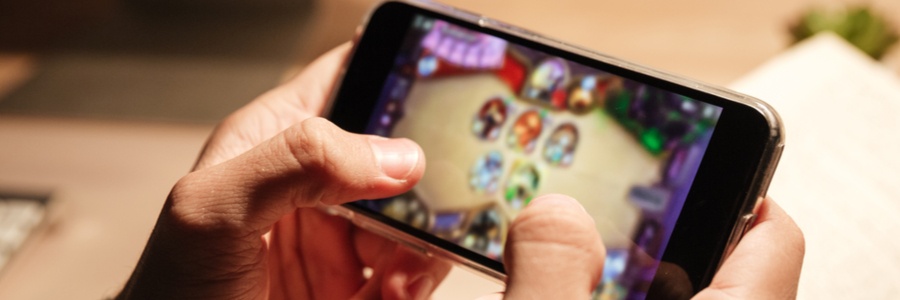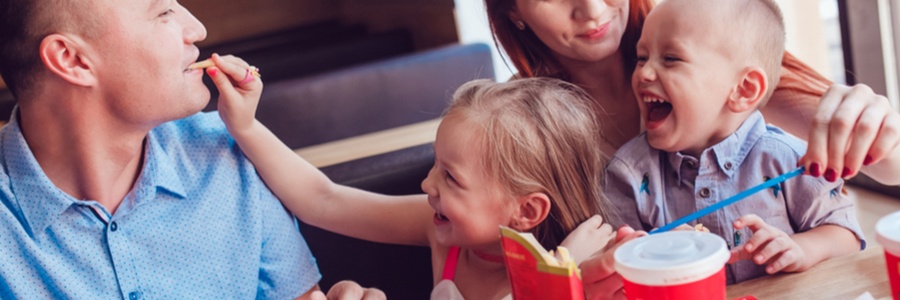Can market researchers score special consumer insights by watching people who watch the Super Bowl? Answers may lie in the already observed behaviors of validated, first-party consumers on the days of two recent buzzed-about football games. These big days for football fans coincided with big days for carry-out pizza.
Major quick-serve pizza brands feasted on two key game days: the Monday, Nov. 19 pro football contest between Kansas City and Los Angeles, which attracted 16.7 million viewers, according to Nielsen, and the Monday, Jan. 7 college football championship between Clemson and Alabama, seen by 24.3 million.
To see how delicious these two Mondays were for pizza-sellers, we checked mobile location data available on MFour’s Path-2-Purchase™ Platform. It’s collected by observing the daily journeys of first-party mobile consumers across more than 12.5 million U.S. retail and restaurant locations. Brands get a unique opportunity to watch fluctuations in the ongoing visitation patterns of these validated, pre-profiled members of the largest all-mobile consumer panel. Observed participants have opted in to have their daily journeys tracked via their smartphones. The data shows not only where they go, but how often, on which days of the week, which times of day, and how long they stay. Valuable in itself, location data becomes even more useful when it’s used as a segmentation tool that identifies just the right people to approach for a subsequent survey.
In our glance at pizza consumption on the days of the two big Monday football telecasts, we looked at visits to Domino’s Pizza, Little Caesars and Pizza Hut.
- On the day of the celebrated, high-scoring game between Kansas City and LA, who both had league-best 9-1 records when they met, the three pizza chains enjoyed a combined 7% increase in visits above their average Monday.
- The only other Monday that saw a bigger gain was Dec. 24 – Christmas Eve, when tracked consumers’ visits to the three pizza chains were 11% above the Monday average.
- The Jan. 7 college championship game saw combined visits to the three pizza outlets rise 5.5% above the average Monday.
- Pizza Hut was the biggest beneficiary, scoring 11% above its average Monday visitation on each of the two big Monday game days.
- Domino’s was up 7% for the Monday night pro game and 3% for the college championship.
- Little Caesars saw game-day gains of 4% and 2%, respectively.
Armed with this location data, researchers would gain an advantage in exploring questions such as these:
Should competing QSR categories attempt counter-measures to maximize their own share of takeout orders on big sports-viewing days other than the Super Bowl?
Should advertisers consider using special, football-themed creative content and timed ad buys to take advantage of specific games that have a special buzz about them?
Answering these questions, and many others, requires direct input from consumers. What you lean by observing where they go will position you to identify exactly the right consumers for a mobile survey focused on the motivations behind those journeys.
For example, did a person who’d never been observed at a Pizza Hut stop at one on the evening of a big game? Why? Anything to do with watching the game? And how satisfied was this consumer with the experience of buying and eating Pizza Hut’s food?
The odds of coming away with valuable insights improve drastically when you can first observe validated, pre-profiled consumers’ journeys to locations relevant to the research project at hand, and then survey the same consumers to discover the “why” behind the buy.
Think of this opportunity in football terms. Winning teams need the right personnel, and strong communication to develop a game plan and carry it out on the field. To win in today’s market research, observing location journeys lets you identify the right personnel – the consumers whose visits and demographic profiles identify them as the people you most want to know more about. Having identified the respondents you need, you communicate with them via a mobile survey to find out what motivates them, and how they experience shopping for and consuming a product.
Does this sound like a playbook for supplying relevant and reliable data and providing decision-makers with analysis and recommendations grounded in proven reality? For a hands-on experience, you can play with the free Path-2-Purchase demo tool by clicking here.









